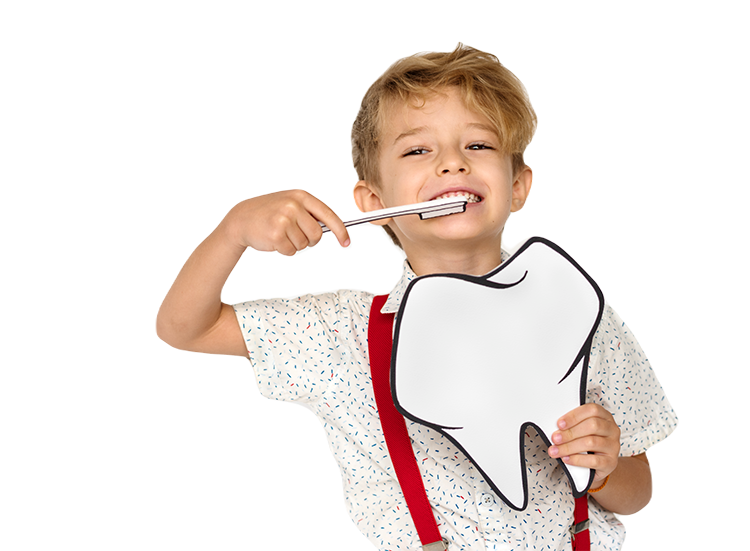Pedodontics
What is paediatric dentistry?
Pedodontics (Pediatric Dentistry) is a department that aims to protect the healthy milk and permanent teeth of children aged 0-13 years and to eliminate the problems caused by caries, trauma, hereditary and similar factors in these teeth.
Importance of Milk Teeth
The first task of milk teeth is to provide nutrition for the child. In addition, the proper development of speech also depends on the presence of milk teeth. Milk teeth protect the area they cover for the permanent tooth that will replace them and guide the permanent tooth as it erupts. When the deciduous tooth is extracted early, this natural placeholder function disappears. The first aim of pediatric dentistry is to take measures to prevent the occurrence of dental problems and to guide children to a decay-free future. The procedures applied for this purpose are preventive dentistry applications.

Protective Applications
Informing the child and his/her family about oral and dental health and nutrition is of great importance in preventive practices aimed at preventing dental caries. Superficial fluoride and fissure sealant procedures are also included in preventive dentistry applications.
Fissure sealant:
Fluorine applications
Fluorine is an element that prevents tooth decay and strengthens the structure of teeth. Since the tooth enamel is not fully matured when the teeth first erupt, newly erupted teeth are generally less resistant to decay and prone to caries formation. Fluorine strengthens the tooth enamel and protects the tooth against acid attacks and thus helps prevent tooth decay. Professional superficial fluoride application is a preventive method that can only be applied by dentists. Superficial fluoride should be applied by a dentist every 6 months.
Tooth Decay
Dental caries is a disease that starts with the destruction of tooth hard tissues by acids produced as a result of fermentation of nutrients by bacteria on the teeth. Especially in early childhood, common caries seen in young children as a result of putting foods such as milk with honey, sugar or biscuits in a bottle during sleep and giving it to the child and dipping the pacifier into sugary foods are called bottle caries.
Tooth Trauma
Placeholders
In this important period, a pedodontist’s approach to communication with children, diagnosis and treatment will contribute to the development of positive attitudes and thoughts towards dental procedures.
Milk teeth are important for your children to speak and chew properly. Untreated decay of deciduous teeth leads to pain, bad odour, chewing difficulties, malnutrition and unsightly appearance. For this reason, children should be taken to the dentist when their milk teeth begin to erupt.
In order to prevent fear of dentist, it is very important for children to meet the pediatric dentist without experiencing toothache. A meeting appointment in a playful atmosphere removes the dental clinic from being a source of anxiety for the child. The effect of the negative experiences children have in their first dental treatment may cause them to be afraid of dental treatments and dentists throughout their lives. In order to avoid such a situation, children should not be forced for any treatment and application.
This process usually starts when children are 5 years old. The entire process may take up to 12 years of age. Between the ages of 7 and 8, the front teeth in the lower jaw begin to fall out. Between the ages of 9 and 12, the other teeth fall out and are replaced by permanent teeth.
In case of early loss of deciduous teeth, placeholder appliances are usually applied to this area. Placeholders play an important role for the teeth coming from below. In order not to cause the adjacent teeth to shift to the area where there is a gap and to prevent the lower teeth from being impacted and at the same time to avoid orthodontic treatment in the future, we provide the same area to those teeth again by applying placeholder treatment and we ensure that they can come from the same area and thus we prevent a change in the facial profiles of the children.
